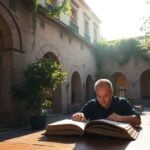When embarking on the journey to secure scholarships, fellowships, grants, loans, or investments, the first step is to thoroughly understand the prompt and the audience you are addressing. Each funding opportunity comes with its own set of guidelines and expectations, which can vary significantly from one application to another. It is crucial to dissect the prompt carefully, identifying key phrases and requirements that will guide your writing.
For instance, if a scholarship application emphasizes community service, it is essential to highlight your involvement in volunteer activities and how they have shaped your character and aspirations. Moreover, understanding your audience is equally important. Funders often have specific criteria for selecting candidates, which may include academic achievements, leadership qualities, or a commitment to a particular field of study.
Researching the organization offering the funding can provide insights into their values and priorities. For example, if you are applying for a grant from an environmental organization, showcasing your passion for sustainability and any related projects you have undertaken will resonate more with the reviewers. Tailoring your proposal to align with the funder’s mission not only demonstrates your suitability but also shows that you have done your homework.
Crafting a compelling hook
Once you have a firm grasp of the prompt and audience, the next step is to craft a compelling hook that captures attention from the very first sentence. A strong opening can set the tone for your entire proposal and entice reviewers to read further. Consider starting with a personal anecdote that illustrates your passion or motivation related to the funding opportunity.
For instance, sharing a transformative experience that ignited your interest in a specific field can create an emotional connection with the reader. Alternatively, you might choose to begin with a thought-provoking statistic or quote relevant to your area of study or project. This approach not only piques interest but also establishes context for your proposal.
For example, if you are applying for a grant focused on education reform, citing recent statistics about educational disparities can underscore the urgency of your work. Regardless of the method you choose, ensure that your hook is engaging and sets the stage for the narrative you will unfold in the rest of your proposal.
Establishing the purpose and relevance
After capturing attention with a compelling hook, it is essential to clearly establish the purpose of your proposal and its relevance to both your goals and the funder’s mission. This section should articulate what you aim to achieve with the funding and why it matters. Be specific about your objectives; vague statements can leave reviewers questioning your commitment and clarity of vision.
For instance, instead of saying you want to “help people,” specify how you plan to “develop a community health program that provides free screenings for underserved populations.” Additionally, it is vital to connect your purpose to broader societal issues or trends that resonate with potential funders. Demonstrating an understanding of how your work fits into larger conversations can enhance its significance. If you are applying for a fellowship in public policy, discussing current legislative challenges and how your research could contribute to solutions will illustrate the relevance of your work.
By clearly articulating both purpose and relevance, you create a compelling case for why your proposal deserves funding.
Showcasing personal experiences and achievements
A successful grant proposal is not just about presenting ideas; it is also about showcasing who you are as an individual. Personal experiences and achievements can provide context for your aspirations and demonstrate your qualifications for the funding opportunity. Reflect on moments in your life that have shaped your goals and values.
Perhaps you volunteered at a local shelter that opened your eyes to social injustices or conducted research that sparked a passion for scientific inquiry. Sharing these experiences can humanize your proposal and make it relatable. In addition to personal anecdotes, highlighting relevant achievements can bolster your credibility as a candidate.
This could include academic honors, leadership roles in organizations, or successful projects you have completed. For example, if you led a team in developing an innovative solution to a community problem, detailing this experience not only showcases your skills but also illustrates your ability to make an impact. By weaving personal experiences with tangible achievements, you create a narrative that is both engaging and persuasive.
Outlining the structure of the essay
A well-structured proposal is essential for clarity and coherence. Outlining the structure of your essay before diving into writing can help ensure that each section flows logically into the next. Start by creating an outline that includes an introduction, body paragraphs addressing key points, and a conclusion that reinforces your main arguments.
Each section should serve a distinct purpose while contributing to the overall narrative. In the body of your proposal, consider organizing content thematically or chronologically, depending on what best suits your message. For instance, if you are discussing various projects you have undertaken, grouping them by theme—such as community service, research initiatives, or leadership roles—can create a cohesive narrative.
Additionally, using headings or bullet points can enhance readability and allow reviewers to quickly grasp key information. A clear structure not only aids comprehension but also reflects professionalism and attention to detail.
Seeking feedback and revisions
The final step in crafting a successful grant proposal is seeking feedback and making revisions based on constructive criticism. Sharing your draft with trusted mentors, peers, or professionals in your field can provide valuable insights that enhance the quality of your work. They may identify areas where clarity is lacking or suggest additional details that could strengthen your argument.
Be open to feedback; it can be challenging to receive criticism, but it is an essential part of the writing process. Once you have gathered feedback, take time to revise your proposal thoughtfully. This may involve reworking sections for clarity, refining language for impact, or even restructuring parts of the essay based on suggestions received.
It is also beneficial to read your proposal aloud; this practice can help identify awkward phrasing or areas where the flow may be disrupted. Remember that revisions are not just about correcting errors; they are an opportunity to elevate your proposal from good to exceptional. In conclusion, securing scholarships, fellowships, grants, loans, or investments requires careful attention to detail and a strategic approach to writing proposals.
By understanding the prompt and audience, crafting compelling hooks, establishing purpose and relevance, showcasing personal experiences and achievements, outlining a clear structure, and seeking feedback for revisions, you can significantly enhance your chances of success. Each step in this process contributes to creating a persuasive narrative that resonates with funders and showcases not only what you hope to achieve but also who you are as an individual committed to making a difference in your field or community.


























